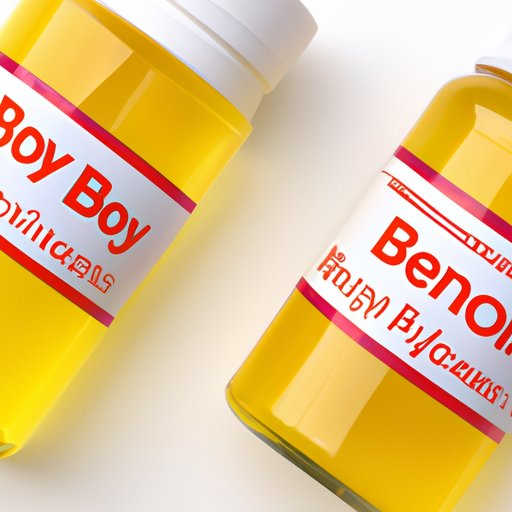Introduction
Benzoyl peroxide (BPO) is a popular skincare ingredient that has been used for decades to treat acne, but it is also sometimes used as a skin whitener or lightener. But does benzoyl peroxide actually bleach skin, and is it safe to use for this purpose? In this article, we will explore the evidence, potential risks and benefits, and guidelines for safe use when considering using BPO for skin bleaching.
Does Benzoyl Peroxide Really Bleach Your Skin?
When it comes to skin bleaching, there is some debate about whether benzoyl peroxide really works. Some people believe that it can help to lighten dark spots and even out skin tone, while others are skeptical that it can have any real effect on skin color. So what is the truth?
Exploring the Evidence
There is limited scientific evidence to support the idea that benzoyl peroxide can be used to bleach skin. A few studies have suggested that it may be effective in reducing hyperpigmentation, which is the darkening of certain areas of the skin due to an excess production of melanin. However, these studies were small and further research is needed to confirm the results.
Understanding How Benzoyl Peroxide Works
Benzoyl peroxide works by decreasing the amount of sebum (oil) produced by the skin, which helps to reduce inflammation and acne. It also acts as an exfoliant, removing dead skin cells from the surface of the skin. This can help to make the skin appear brighter and more even-toned, but it is not known if it can actually lighten the skin itself.

The Pros and Cons of Using Benzoyl Peroxide for Skin Bleaching
Before using benzoyl peroxide for skin bleaching, it is important to consider the potential risks and benefits. Here are some of the pros and cons to consider.
Benefits of Using Benzoyl Peroxide
The main benefit of using benzoyl peroxide for skin bleaching is that it can help to reduce inflammation and improve the appearance of dark spots. It can also help to unclog pores and remove dead skin cells, making the skin appear brighter and more even-toned.
Potential Risks of Using Benzoyl Peroxide
The primary risk of using benzoyl peroxide for skin bleaching is that it can cause irritation and dryness. It can also make the skin more sensitive to the sun, so it is important to use a sunscreen if you are using it for this purpose. Additionally, it is important to note that benzoyl peroxide is not approved by the FDA for skin bleaching, so it is not regulated and may not be safe for everyone.

Understanding the Side Effects of Using Benzoyl Peroxide for Skin Lightening
Using benzoyl peroxide for skin lightening can cause a number of side effects, including redness, itching, burning, and peeling. Additionally, it can make the skin more sensitive to the sun and make existing skin conditions worse. If you experience any of these side effects, stop using the product and seek medical advice.
Common Side Effects
Some of the most common side effects of using benzoyl peroxide for skin lightening include:
- Redness
- Itching
- Burning
- Peeling
- Dryness
- Sensitivity to sunlight
When to See a Doctor
If you experience any of the above side effects, or any other unusual symptoms, it is important to see a doctor as soon as possible. Additionally, it is important to speak to your doctor before using benzoyl peroxide for skin lightening, as it may not be suitable for everyone.
How to Use Benzoyl Peroxide Safely for Skin Bleaching
If you decide to use benzoyl peroxide for skin bleaching, it is important to follow the instructions carefully and use it safely. Here are some tips for using BPO safely:
Guidelines for Safe Use
- Always use the product as directed, and never use more than the recommended amount.
- Apply the product to a small area of skin first to test for allergic reactions or sensitivity.
- Use a sunscreen with SPF 30 or higher when using benzoyl peroxide for skin bleaching.
- Avoid contact with eyes, nose, and mouth.
- Stop using the product immediately if you experience any side effects.
Alternatives to Benzoyl Peroxide
If you are looking for a safe and effective way to lighten your skin, there are a number of alternatives to using benzoyl peroxide. These include natural ingredients such as lemon juice, aloe vera, and turmeric, as well as professional treatments such as chemical peels and laser therapy.
Conclusion
Benzoyl peroxide is often used to treat acne, but it can also be used for skin bleaching. While there is limited scientific evidence to suggest that it can be effective in reducing hyperpigmentation, it is important to understand the potential risks and side effects before using it for this purpose. If you decide to use BPO for skin bleaching, it is important to follow the instructions carefully and use it safely. Additionally, there are a number of alternatives to benzoyl peroxide that may be safer and more effective.


